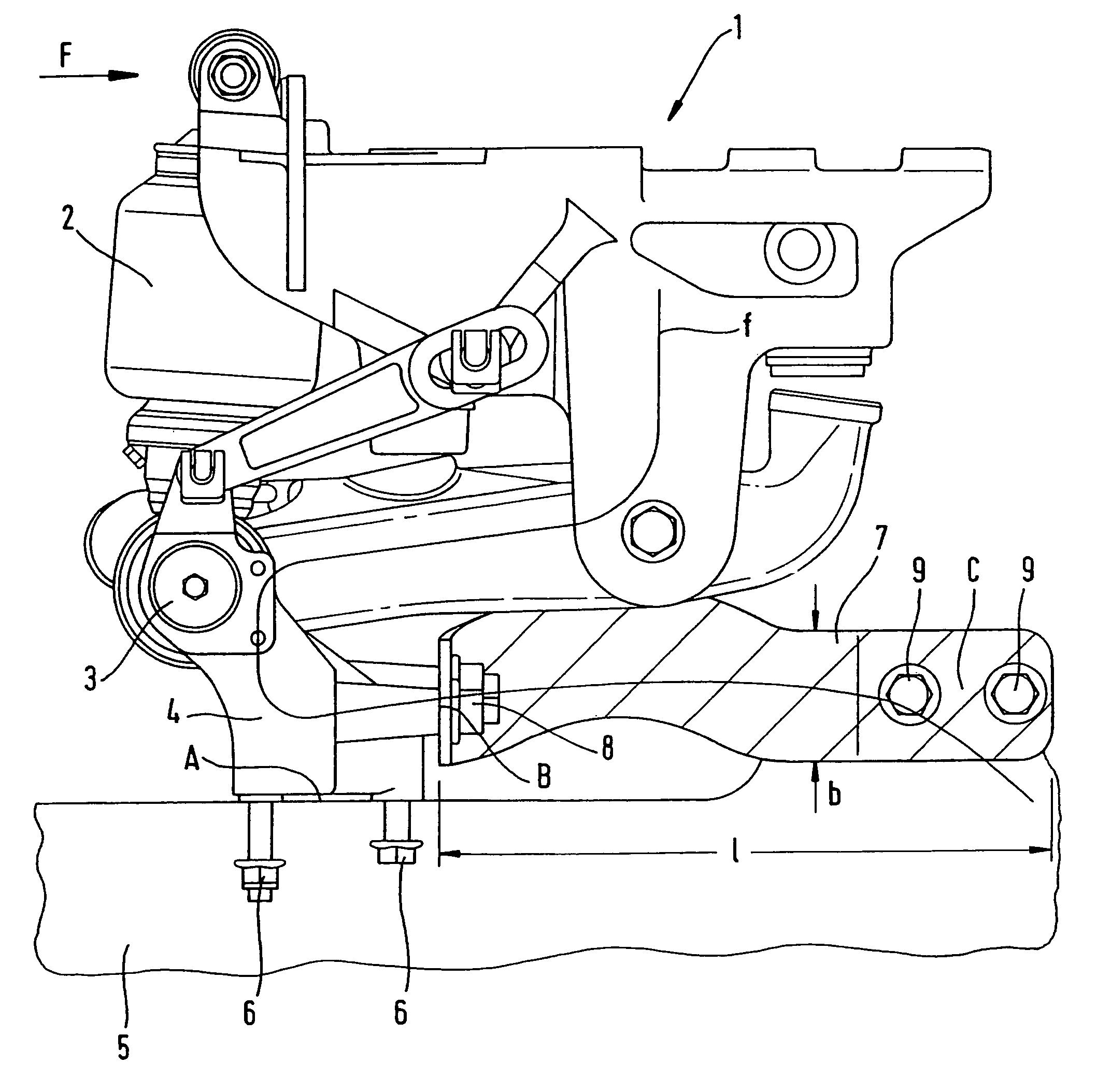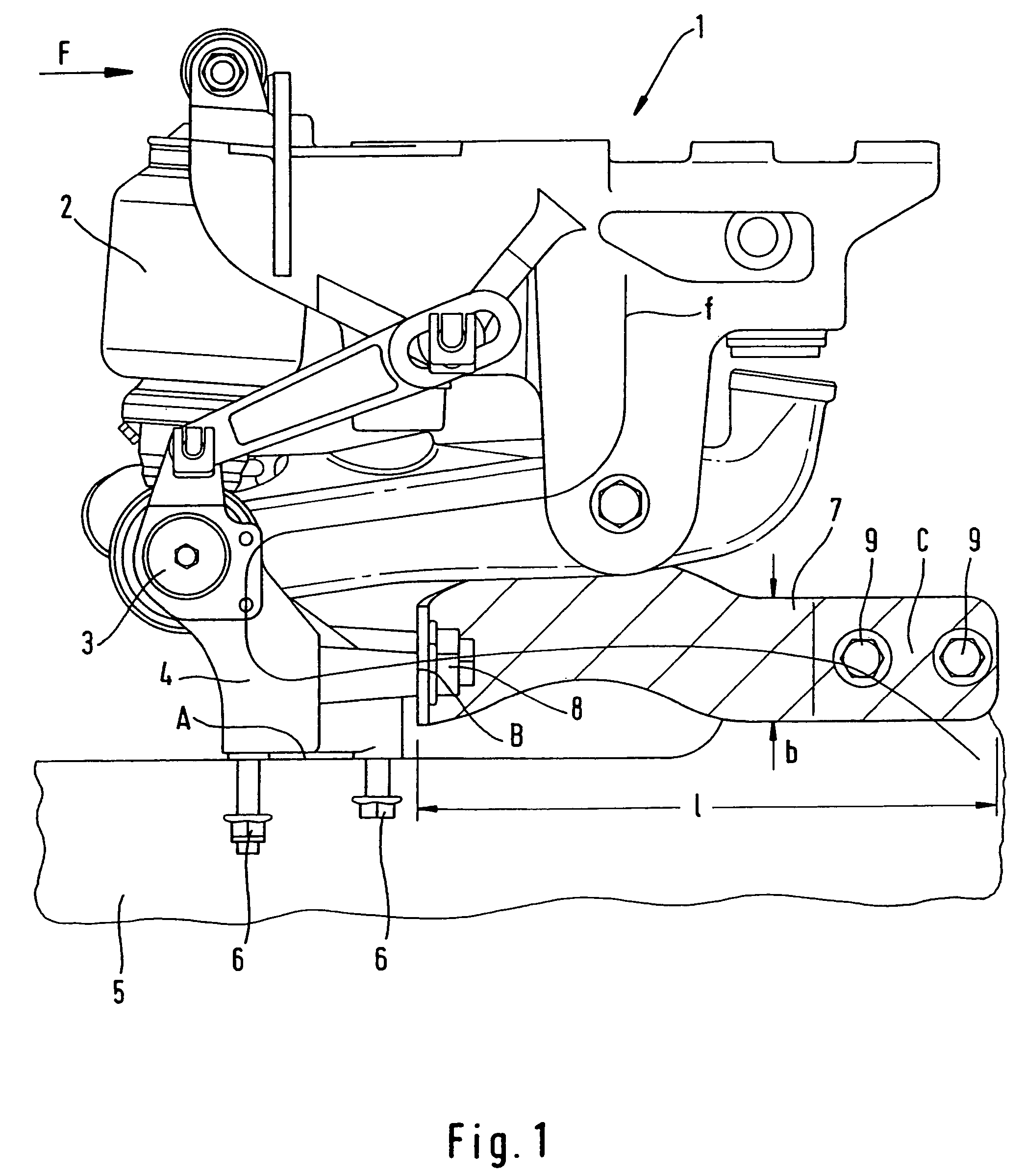Linkage for a driver's cab
a driver's cab and linkage technology, applied in the field of driver's cabs, can solve the problems of driver's cab enough room to shift backward, high cost, and particularly serious situation, and achieve the effect of good deformation or crumpling characteristics, easy and inexpensive production
- Summary
- Abstract
- Description
- Claims
- Application Information
AI Technical Summary
Benefits of technology
Problems solved by technology
Method used
Image
Examples
Embodiment Construction
[0023]FIG. 1 depicts a retainer according to this invention. Two such retainers are usually provided in a vehicle, one on each side of the cab. In FIGS. 1 and 3, the left-hand side of the illustration points toward the front of the vehicle; the illustrations in FIGS. 2 and 4 represent the left-hand retainer of the cab as viewed from the front.
[0024]The retainer includes a support assembly 1. The support assembly incorporates, among other components, a spring-loaded leg 2. The bottom end of the spring-loaded leg features a pivot bearing 3 by way of which the cab is attached in tiltable fashion. The support assembly is not depicted in more detail since it is of a conventional design and is not a relevant factor in the invention.
[0025]Through junction A at its lower end, the support 1 is attached to a connecting element 4. This connecting element 4 attaches the support to a vehicle frame 5, which in FIGS. 1 and 3 is schematically outlined only. In the example shown, the connecting elem...
PUM
 Login to View More
Login to View More Abstract
Description
Claims
Application Information
 Login to View More
Login to View More - R&D
- Intellectual Property
- Life Sciences
- Materials
- Tech Scout
- Unparalleled Data Quality
- Higher Quality Content
- 60% Fewer Hallucinations
Browse by: Latest US Patents, China's latest patents, Technical Efficacy Thesaurus, Application Domain, Technology Topic, Popular Technical Reports.
© 2025 PatSnap. All rights reserved.Legal|Privacy policy|Modern Slavery Act Transparency Statement|Sitemap|About US| Contact US: help@patsnap.com



